Dead Arm Syndrome presents as a perplexing condition, striking those engaged in repetitive shoulder movements with sudden, acute pain, rendering their arm temporarily unusable or weak.
It often creeps up on athletes, especially baseball pitchers, who demand the utmost from their shoulders, only to find themselves grappling with sharp discomfort and a concerning loss of function.
The journey to reclaiming the arm’s vitality involves unraveling the causes, scrutinizing the symptoms, and seeking interventions that can alleviate discomfort and restore function.
Key to this journey is an insightful conversation with your doctor or a specialist experienced in sports injuries.
Keep reading to unravel the mysteries of Dead Arm Syndrome and discover strategies to combat it effectively.
Introduction to Dead Arm Syndrome
You might be wondering what exactly dead arm syndrome entails and its significance in the realm of orthopedics.
Stripped down to its essence, dead arm syndrome is a condition that can cause a sudden, acute onset of arm pain and a loss of throwing ability in athletes, particularly those who engage in sports that require repetitive overhead motions.
With a deeper appreciation for the intricacies of musculoskeletal health and injury prevention, orthopedic professionals place high importance on understanding and addressing this condition.
After all, an effective approach to treating dead arm syndrome not only alleviates the immediate discomfort but also paves the way for ongoing health and optimal performance in athletic endeavors.
So, let’s unravel the layers of dead arm syndrome and explore the potential paths for treatment that can restore function and mitigate pain.
Definition and Overview
Imagine your arm suddenly losing its vigor, your throw faltering mid-air because your limb feels like it’s not your own. This bewildering sensation is typically what individuals with dead arm syndrome experience, where the arm’s functionality is impaired without apparent reason, leading to discomfort and a hindered ability to perform certain physical activities.
Consulting with a physician upon noticing these symptoms is crucial, as dead arm syndrome may stem from a variety of underlying conditions, ranging from nerve compression to tissue inflammation or injury. Accurate diagnosis is essential, and a specialist’s expertise can pinpoint the root cause and set you on the path to the most effective treatment.
Importance in Orthopedics
Within the orthopedic sphere, dead arm syndrome garners significant attention due to its potential to sideline athletes. This underscores the imperative for orthopedic specialists to address the issue with urgency, ensuring individuals can reengage with their sports swiftly and, most importantly, safely.
A grasp of the nuances of dead arm syndrome empowers doctors to deliver comprehensive care that extends beyond mere symptom management. Their approach integrates preventative strategies, nuanced understanding of sports biomechanics, and tailored treatments, all working collaboratively to rehabilitate and fortify the arm against future injury.
Symptoms of Dead Arm Syndrome
Recognizing the manifestations of dead arm syndrome is key in tackling the condition head-on.
You may observe a perplexing spectrum of symptoms, with pain being the central complaint that signals something amiss in your arm’s intricate machinery.
Understanding the description and presentation of these symptoms yields insights into the underlying factors at play, thereby serving as a compass for both diagnosis and subsequent intervention.
As you venture into comprehending how dead arm syndrome unfolds, keep in mind that the characteristics of your discomfort and functional impairment offer critical clues in formulating an effective treatment plan.
Description and Presentation
When the vigor of your throw is compromised and your arm succumbs to a mysterious weakness, you might be manifesting signs of dead arm syndrome. The pain, often described as sharp, can initiate unexpectedly during activity and cause your arm to feel heavy, almost paralyzed, disrupting your athletic performance.
It’s not unusual for you to notice a gradual decline in arm strength or a sensation that ranges from numbness to intense discomfort, localized in the shoulder or radiating down to your fingers. These indicators are tell-tale signs that necessitate prompt attention, potentially from an orthopedic specialist who can offer a diagnosis and guide you through the appropriate interventions.
Understanding Underlying Factors
Peeling back the layers, you uncover that dead arm syndrome doesn’t have a singular cause but is often the result of multiple factors crescendoing into noticeable discomfort and impediment. This condition might originate from rotator cuff injuries, shoulder dislocations, or even repetitive stress, each contributing to the weakening and eventual pain in your arm.
Connecting with a specialist who can evaluate these elements is paramount, as they possess the capability to discern between structural damage and muscular fatigue, each requiring a distinct approach to treatment. Your individual history and physical examination guide this discovery, ensuring that the most relevant factors are considered in your journey to recovery.
Risk Factors for Dead Arm Syndrome
Recognizing who is most at risk for developing dead arm syndrome sharpens the focus on preventative measures and personalized treatment options.
The condition does not discriminate, stretching its reach across various domains such as sports, occupation, and age.
Athletes, particularly those who participate in activities demanding repetitive overhead movements, are prime candidates for this affliction.
Likewise, your job might place you in the danger zone if it involves strenuous arm labor or unvaried motions.
Moreover, advancing age can compound susceptibility, as your body’s natural resilience wanes.
Identifying yourself within these vulnerable populations is a vital step in fostering a proactive approach to your musculoskeletal health.
Sports, Occupation, Sleep Position and Age Factor
Sometimes your arm may go numb whilst you are asleep. This curious condition occurs when your arm becomes trapped or compressed in an awkward position while you’re sleeping. The resulting pressure on the nerves can cause a temporary loss of sensation, leaving your arm feeling numb and unresponsive when you wake up. It’s as if your arm has gone on its own little journey while you were lost in dreams.
Thankfully, with a bit of gentle movement and adjustment, circulation resumes, and feeling returns to your limb, banishing the peculiar sensation of a “dead” arm as quickly as it arrived.
Your devotion to certain sports or career can unwittingly expose you to dead arm syndrome. Pitchers in baseball, tennis players, and swimmers, for instance, are frequently plagued by this malady due to the intense and repetitive stresses their activities impose on their shoulders and arms.
With the passage of time, age weaves its own complexities into the likelihood of encountering dead arm syndrome. Youth may offer a protective resilience, but as the years accumulate, so does the wear and tear on your musculoskeletal system, highlighting the need for awareness and adaptive strategies as you age.
Identifying Vulnerable Populations
Your active lifestyle places you at risk for dead arm syndrome, especially if your passions include sports like baseball or competitive swimming. Recognize your vulnerability, as the recurring demands of certain athletics intensify the strain on your arm, setting the stage for potential issues.
The nature of your professional responsibilities could also ambush your arm’s health if your work involves repetitive tasks or heavy lifting. Tuning into the specific demands of your occupation allows you to take preemptive steps towards safeguarding against this incapacitating syndrome.
Diagnosis of Dead Arm Syndrome
Embarking on the journey to diagnose dead arm syndrome involves a meticulous mix of clinical assessment and imaging techniques.
When meeting with your doctor, a thorough review of your medical history and a hands-on examination are vital.
This, combined with state-of-the-art diagnostic tools, forms the bedrock for pinpointing the precise cause of your symptoms.
A deeper understanding of these diagnostic procedures allows you to engage in the process with clarity, setting the stage for tailored treatment strategies to address your unique condition.
Clinical Assessment and Imaging
Your initial consultation with a doctor entails a meticulous exploration of your symptoms; every detail you provide helps construct a comprehensive picture of your condition. Through deliberate palpation and movement testing, your physician assesses the integrity of your shoulder joint, seeking to identify any telltale signs of the syndrome’s presence.
Fusing the insights gained from the physical exam, your doctor may then suggest diagnostic imaging—a step that brings the inner workings of your arm into clear view. Technologies such as MRI or ultrasound serve as non-invasive windows into the musculoskeletal landscape, aiding in the detection of subtle anomalies that might be contributing to your pain and dysfunction.
Understanding Diagnostic Procedures
Your interaction with the healthcare system intensifies during the diagnostic phase, as you become an active participant in uncovering the mysteries of dead arm syndrome. Your doctor relies on specific, targeted questions and the results from diagnostic imaging to map out the cause of your discomfort, linking your symptoms to their clinical knowledge and ensuring your diagnosis is not just a guess, but an informed conclusion backed by science.
Imagine the relief that comes with knowing precisely what ails you; this clarity is what advanced diagnostics aim to provide. As you undergo tests like MRIs or nerve conduction studies, these sophisticated tools work to unravel the complexity of your condition, revealing the subtleties of nerve, muscle, and connective tissue health, and thereby affording your health care provider the insight needed to create a treatment plan that is as precise and personalized as the details etched within your own anatomy.
Differential Diagnosis
Zeroing in on the correct diagnosis of dead arm syndrome demands a precise dissection of symptoms and an investigation into their origins, distinguishing it from conditions with overlapping manifestations.
It is imperative that you understand the subtleties differentiating dead arm syndrome from other orthopedic conditions, which might masquerade with similar discomforts.
The exploration of related musculoskeletal issues is a crucial step in your diagnostic journey.
This requires a keen awareness of the specific markers of dead arm syndrome—a task your physician undertakes with exactitude—ensuring the treatments you embark upon are accurately aligned with the true nature of your condition.
Distinguishing Dead Arm Syndrome from Similar Conditions
At your appointment, your physician undertakes a thorough analysis, distinguishing dead arm syndrome from ailments with resembling signs, such as tendinitis or bursitis, which might also limit mobility and cause pain. This discernment is essential as it influences the direction and specific nature of your treatment regimen.
Armed with knowledge and precision, your doctor considers the full range of potential conditions, distinguishing between the subtle discrepancies that characterize dead arm syndrome and other, similar issues like thoracic outlet syndrome or nerve impingements, to ensure that your diagnosis is exact and your treatment is aptly targeted.
Exploring Related Orthopedic Issues
In your pursuit of clarity regarding dead arm syndrome, it’s crucial to recognize that the landscape of orthopedic ailments is vast and often intertwined. Misjudging or overlooking other conditions with symptomatology that echo those of dead arm syndrome could lead to ineffective treatment plans and prolong your road to recovery.
A meticulous approach to your medical evaluation is the cornerstone of differentiating between dead arm syndrome and other orthopedic challenges, such as impingement syndromes or nerve entrapment conditions. A specialist’s discerning eye and methodical diagnostic process play a pivotal role in isolating your specific ailment, ensuring you receive the most appropriate interventions to alleviate your arm pain and retrieve your functional prowess.
Management and Treatment Approaches
Confronting dead arm syndrome means evaluating a spectrum of strategic interventions that are as diverse and complex as the condition itself.
Your journey toward relief and recovery may span a continuum that starts with less invasive, conservative treatments, and for others may culminate in the precise craftsmanship of surgical intervention followed by dedicated rehabilitation.
Both avenues, designed to restore strength and function, require careful consideration given your unique situation, and the insights of a physician who is attuned to the subtleties of your pain and impairment.
The following insights will illuminate the nuances of managing dead arm syndrome, from the initial conservative methods to the possibility of surgery and the commitment to rehabilitation that follows.
Conservative and Interventional Treatments
Navigating the pathway to alleviating the symptoms of dead arm syndrome begins with conservative treatments that focus on lessening your pain while enhancing arm function. Often your doctor will recommend a combination of rest, ice application to reduce inflammation, and targeted physical therapy exercises designed to gradually rebuild your arm’s strength and flexibility.
Should these initial efforts not yield the results you seek, interventional treatments become the subsequent course of action. In this case, your physician might explore options such as corticosteroid injections to address severe inflammation or prescribe specialized exercises under the guidance of a trained physiotherapist to further refine and fortify the muscles and tendons of your arm.
Surgical Options and Rehabilitation
Sometimes, when conservative measures are insufficient, your specialist may suggest surgery to directly repair the structures within your shoulder. It is a step considered when diagnostic results show significant tissue damage or when your quality of life remains compromised despite other treatments.
Post-surgery, your commitment to a structured rehabilitation program is key to regaining full function and preventing future injury. Working closely with your rehabilitation team, you will embark on a custom-designed regimen that progressively restores strength and mobility, ensuring your return to daily activities and athletic pursuits is successful and sustainable.
Preventive Strategies for Dead Arm Syndrome
Shielding yourself from dead arm syndrome is as essential as treating it.
A strategic focus on injury prevention can fortify your defenses against the intrusion of this condition into your active lifestyle.
Take steps to implement effective preventive measures, a blend of strengthening exercises, proper technique refinement, and adequate rest periods, all of which are critical to maintaining your arm’s health and functional integrity.
While the responsibility of managing existing symptoms could fall to a specialist, the duty of preventing the occurrence or recurrence of dead arm syndrome rests predominantly in your hands.
Importance of Injury Prevention
Proactive measures in averting dead arm syndrome begin with recognizing that injury prevention is preferential to treating an existing condition. Cultivating a habitual practice of exercises that reinforce shoulder stability and resilience equips your body with a more robust defense against the strains that precipitate this syndrome. Remember, by nurturing your musculoskeletal health, you ensure your arm’s vitality and longevity in the sport or activities you cherish.
Refining your technique under the guidance of a coach or a physical therapist acts as a cornerstone in preempting the onset of dead arm syndrome. By adopting proper form and mechanics in your movements, you minimize the undue stress on your arm structures, thereby reducing your risk of injury. It’s crucial that you give your arm the respect and care it needs through intelligent, informed practices, as this armors you against the unexpected emergence of pain and dysfunction.
Implementing Effective Preventive Measures
To protect your arm from the debilitating effects of dead arm syndrome, incorporate dynamic warm-ups before engaging in any activity that puts considerable strain on your arm. This increases blood flow and preps your muscles for action, reducing the potential for strains and sprains linked to cold, stiff muscles.
Reinforce your preventive approach by establishing limits on activity duration and intensity, especially in sports with a high demand on the shoulders and arms. Adhering to these boundaries aids in avoiding the excessive fatigue that sets the stage for injury, giving your body the crucial time it needs to repair and recover.
Living with Dead Arm Syndrome: Resources and Support
Living with dead arm syndrome presents unique challenges, and finding resources and support is a vital component of managing your condition. By tapping into the wealth of information provided by trusted medical providers and patient advocacy groups, you arm yourself with knowledge that can demystify the condition and inform your decisions regarding care and treatment.
Engaging with online forums or local support groups offers you the camaraderie of fellow sufferers, which can be both comforting and educational. Sharing your experience and hearing others’ stories of managing pain and navigating treatments fosters a sense of community and collective wisdom that can enhance your own journey toward recovery.
Consult regularly with your physician or specialist to stay abreast of the latest advancements in treatments and preventative strategies. Your healthcare provider is a crucial ally, equipped to provide you with personalized advice and adjustments to your treatment plan as your needs evolve over time.
Maintain an open dialogue with your employer or coaching staff if your condition impacts your work or athletic participation. Clear communication about your limitations and necessary accommodations ensures that you can maintain productivity and engagement while prioritizing your health and recovery.
Conclusion and Takeaways
Your arm’s health and function hinge upon timely recognition of symptoms, accurate diagnosis, and an actionable treatment plan. Your awareness and prompt attention to the distinct pain and weakness characterizing this condition serve as your first line of defense against prolonged discomfort and performance setbacks. Remember, action derives its value when applied deliberately and without delay.
Your resolve to consult with a specialist for an authoritative diagnosis and to explore a range of treatments marks a commendable commitment to reclaiming your arm’s vitality. Engaging with your physician to understand the underlying causes and intricacies of your symptoms ensures that your path to recovery is underpinned by a robust foundation of medical expertise. You wield the agency to influence the trajectory of your recovery and return to the activities you love with renewed strength.
By pinpointing the condition’s origins—whether nerve compression, tissue inflammation, or injury—individuals can engage with specialists to develop targeted treatments for relief and restoration.
A proactive stance on preventative measures, informed by sports mechanics and muscle strengthening techniques, provides a robust defense against potential reoccurrence.
Staying informed and supported through recovery fosters a resilient return to peak arm function and overall musculoskeletal health.
(Photo Credit – Adobe)
- Understanding Hip Labral Tears: Symptoms, Causes, and Treatment Options - December 3, 2025
- Kneecap Bursitis: Symptoms, Treatments, and Recovery in Flagstaff - October 23, 2025
- Jones Fractures: What Flagstaff Locals Should Know - September 30, 2025

